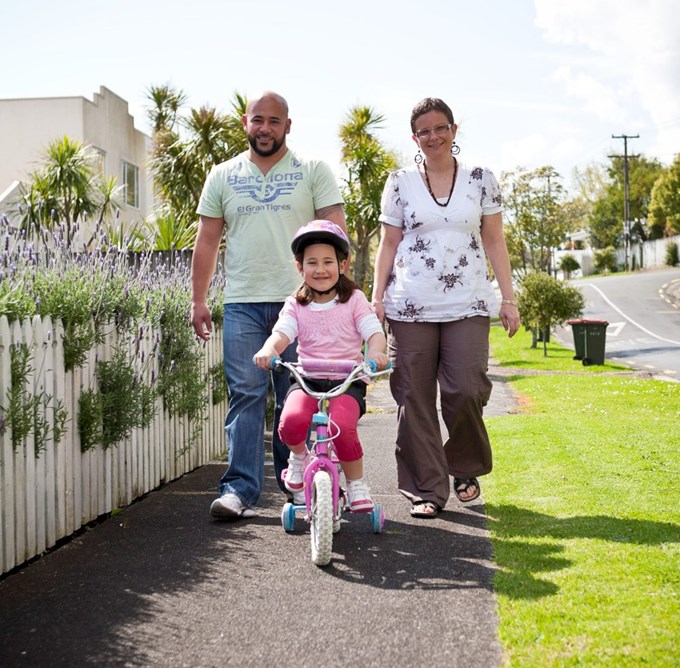Safer roads and better-connected neighbourhoods are the outcomes expected from the Low Traffic Area projects currently in the first stages in Glen Innes and Onehunga.
Maungakiekie-Tāmaki Local Board was awarded a grant by Waka Kotahi as part of the national Innovating Streets for People Pilot Fund.
The fund focuses on using Tactical Urbanism Techniques and provides councils with a 90 per cent funding assistance rate (FAR) as well as capability building support for successful applicants. The balance of the funding coming from the Local Board Transport Capital Expenditure Fund and is not affected by COVID-19 belt tightening at this point.
The Low Traffic Area project which the board advocated for is led by member Peter McGlashan who is working closely with Auckland Transport, as well as Waka Kotahi - New Zealand Transport Authority.
“It’s the community engagement element to this project which we hope will really result in long term improvements because there should be a much greater sense of ownership for the residents than in traditional projects”, explains Peter.
“We are starting with a completely blank sheet and are seeking ideas from the community, either directly or through their feedback online of what they like, don’t like or experience in the streets near their homes. They are the experts in knowing how their neighbourhoods move, so in these initial stages we are almost 100 per cent led by that input.
"The traffic design specialists then take that feedback and then partner it with the data we’ve captured, what we know about traffic volumes and recorded speeds on the surrounding streets. What we’ve seen so far is concerning and validates the stories the public are sharing with us.”
Maungakiekie-Tāmaki is the narrowest point of the Auckland isthmus. Keeping traffic flowing efficiently in and around the area is critical to the successful functioning of the entire city’s traffic system. New technology like Satnavs and Google Maps means that many residential streets have become rat-runs for traffic trying to take the quickest route to their destination all to save a few seconds on alternatives, turning quiet local streets into loud, polluted, busy places which put the most vulnerable users of those streets, people walking, cycling and with mobility challenges, at risk of serious injury and death.
Utilising ‘tactical urbanism’ tools and testing interventions and project elements on a temporary basis constitutes a form of "engagement by doing" and enables the relative success of ideas to be assessed before they are committed to more permanently. The core process is do-learn-adapt-redo-learn-do. Any mistakes are cheap to fix and offer quick lessons that then shape the next iteration and trial’s next stage.
Low Traffic Neighbourhoods or Areas (LTN or LTA) are a low speed, low volume, people-friendly area that allows vehicles access but prevents them from dominating or using the area as a short-cut.
The areas of Arthur Street and Grey Street in Onehunga and Eastview Road in Glen Innes are the two trial areas for this project because “these areas are well known as shortcuts to larger arterial roads, carrying traffic volumes they were never designed for, at speeds that are dangerous for residents out for a walk with the dog or kids walking, biking or scootering to school," explains Peter.
"We all saw how nice our neighbourhoods were during the lockdown, and how much was in reach of our homes if we walked or biked. This project is about seeing if that oasis and sense of safety and tranquility can be replicated through the trial and if successful, maybe held onto as intensification and climate change challenges our attitudes towards driving and congestion."
“Ensuring that people are at the heart of a neighbourhood is a lofty goal, especially as our towns and city's become more densely populated.
"However, with this project we aim to do just that. Lessons learnt from these two trials will be used elsewhere across Auckland and New Zealand, with Low Traffic Areas proving the most effective tool globally to reduce car-dependency for short trips, trips which could be done another way. This gets more people walking, cycling and on Public transport, which reduces congestion for those on the roads that have no choice but to drive.”
Have your say
Consultation with the Low Traffic Areas – Arthur Grey LTA in Onehunga and Eastview LTA in Glen Innes - has started with the first Public Info Sessions and Workshops this weekend.
You can contribute online through until the project finishes in June 2021 via online forums, email and Open Days.
To stay in touch make sure to register at the appropriate project page below to Have Your Say on these and other Auckland Council Projects.
Arthur Grey Low Traffic Area – Onehunga - akhaveyoursay.aucklandcouncil.govt.nz/arthur-grey-low-traffic-area
Eastview Low Traffic Area – Glen Innes - akhaveyoursay.aucklandcouncil.govt.nz/eastview-low-traffic-area


